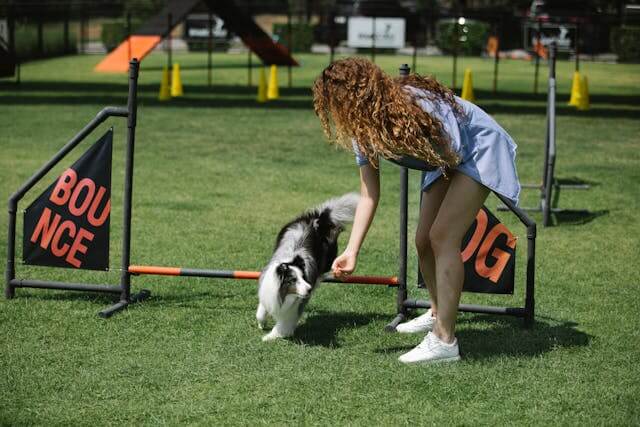Owning a pet brings countless joys, but it can also put a strain on your budget. From food to veterinary visits, the costs add up quickly. To help ease the financial burden, I’ve gathered some practical tips to save money while still giving your furry friend the care they deserve.
One great strategy is to buy pet food and snacks in bulk. This not only saves money in the long run but also ensures that you always have what you need. Additionally, keeping up with regular vet appointments can prevent more costly health issues down the road.
Another smart approach is to consider signing up for auto-ship subscriptions from retailers. These services often offer discounts and free delivery on essential items like food, treats, and medicine, helping you save both time and money.
Understanding the Costs of Pet Ownership

As a pet parent, it’s essential to be aware of the different costs associated with pet ownership.
First, there are initial costs. For dogs, this includes purchasing or adopting, which can range from $0 at a shelter to thousands at a breeder. Cats have similar adoption costs.
Second, you’ll face recurring expenses.
- Food: Feeding a dog can cost between $250 to $700 a year.
- Medical Care: Annual routine vet care averages $242 for dogs and $178 for cats.
- Grooming: Expect to spend an average of $30 to $90 per grooming session.
Monthly Costs
| Expense | Dogs | Cats |
|---|---|---|
| Food | $20 – $60 | $10 – $40 |
| Insurance | Around $50 | Around $30 |
| Miscellaneous | $10 – $50 | $10 – $50 |
Unexpected Costs
Emergency vet visits, which can rise significantly, and surgical visits average $458 for dogs and $201 for cats.
Another essential cost is pet insurance. Basic policies start at about $50 a month for dogs and $30 a month for cats. This can help manage surprise medical expenses.
It’s crucial to budget for supplies like beds, collars, and toys. These might seem minor but add up quickly.
Owning a pet involves a mix of fixed and variable costs. It all adds up, so having a clear picture of the financial commitment helps ensure you’re prepared for your new furry friend.
Budgeting for Routine Pet Care

Keeping your pet healthy doesn’t have to break the bank. Focus on preventive care, good nutrition, and regular grooming to manage costs effectively.
Preventive Health Care
Regular vet check-ups can prevent serious health issues. I budget for yearly vaccinations, which range from $50 to $150. Flea, tick, and worm prevention can save on future treatments and generally cost about $10 to $30 per month. Investing in a pet insurance policy might seem costly upfront, but it can save significant money on emergencies and surgeries.
Medications can vary. A three-month supply might cost around $30 to $60. Over-the-counter treatments, like flea shampoos, are cheaper but need frequent purchasing.
Healthy Nutrition Habits
Feeding your pet high-quality food prevents health issues down the line. Depending on the pet’s size, breed, and age, monthly food costs can range from $10 to $50. Opt for nutritional brands that have good reviews and avoid fillers that offer little nutritional value.
Buying food in bulk saves money. Subscription services can also offer discounts and deliver food to my door, sparing trips to the store. Consulting with your vet ensures that you’re feeding your pet the right kind and amount of food.
Grooming and Hygiene
Maintaining your pet’s hygiene is essential. Regular grooming sessions prevent skin problems and matting in fur. Monthly professional grooming can cost $30 to $90, depending on the pet’s size and coat condition. For pets that require frequent grooming, doing it myself saves money.
Invest in basic grooming tools like brushes, nail clippers, and pet-safe shampoos. Though there’s an initial cost, it saves money over time. Routine dental care is crucial, too. Pet toothbrushes and toothpaste are affordable and prevent more costly dental procedures later.
Saving on Pet Supplies

Saving on pet supplies involves choosing affordable products, making some items yourself, and taking advantage of deals and discounts.
Choosing Affordable Pet Products
When it comes to pet products, brand-name items can be pricier without offering additional benefits. Look for generic or store-brand items that have similar ingredients or features. When purchasing food, it’s important to check the ingredients list and ensure it meets your pet’s dietary needs.
Bulk buying can also be a money-saver. Purchase large bags of pet food and stock up on sale items like treats, toys, and grooming supplies. Doing this saves me a significant amount over time.
Lastly, avoid buying single-use items. Products like washable pee pads or durable toys that last longer can help cut down on frequent purchases.
DIY Pet Essentials
Creating some of your pet supplies yourself can be both cost-effective and fun. One of my favorite DIY projects is making pet toys from household items. Old t-shirts can be braided into durable chew toys, and cardboard boxes make great play areas for cats.
Another DIY solution is making pet beds. Using old blankets and cushions, create comfy sleeping spots for your pets without spending a fortune. If you’re handy with a needle and thread, sewing a simple pet bed cover can be a project that saves money in the long run.
DIY grooming products also help save money. Homemade dog shampoo made from ingredients like oatmeal, water, and a bit of pet-safe soap can be gentle on both your pet’s skin and your wallet.
Finding Deals and Discounts
Saving on pet supplies also means being on the lookout for deals and discounts. Regularly check discount stores, which often have lower prices on pet essentials. Signing up for store loyalty programs can lead to special offers and savings.
Online shopping is another great way to find deals. Websites frequently have sales, and subscribing to newsletters can get you coupons and alert you to discounts. Price comparison websites can show you where to get the best deal on specific items.
Free samples are sometimes available at pet stores or online. Take advantage of these to try new products without spending money. Additionally, joining online communities or groups can keep me informed about unexpected sales and share tips on saving even more.
Cost-Effective Pet Training

Training your dog can be pricey, but there are many ways to cut costs. One way is to become your dog’s trainer. By using online resources, books, and videos, you can avoid paying for lessons.
Investing in durable training equipment saves money in the long run. High-quality leashes, collars, and toys may cost more initially but won’t need frequent replacement.
Group classes are another option. They are often less expensive than private lessons and can be found at local pet stores or community centers. This allows your dog to socialize while learning.
Consider these training tips:
- Use positive reinforcement with treats or praise.
- Be consistent and patient.
- Train daily for short periods to keep your dog engaged.
Training at home can also be effective. Simple commands like sit, stay, and come can be practiced in your living room or backyard without spending money.
For more complex issues, some training schools offer free evaluations or workshops. Checking for these events can provide professional guidance without a big expense.
If you need extra help, asking a friend or family member who has trained their dog can be beneficial. Sometimes, advice from someone you trust is just what you need.
By taking these steps, you can effectively train my dog without breaking the bank.
Entertaining Your Pet on a Budget

Keeping your pet entertained doesn’t have to be expensive. With a bit of creativity, you can provide hours of fun without spending much.
Homemade Toys and Games
One of my favorite ways to save money is by making toys at home. Cardboard boxes are great for cats who love to hide and pounce. An empty toilet paper roll can be turned into a chew toy for dogs.
Old socks can become tug-of-war ropes. Fill them with a bit of crinkly paper, and you’ve got a new favorite toy.
Interactive games are another way to keep pets engaged. Dogs love playing hide and seek with treats. Cats can chase a string or laser pointer. Both are simple, low-cost options that offer lots of fun.
Free Outdoor Activities
Getting outside is a great way to entertain pets for free. Dogs especially love exploring new environments. A trip to the local park or a long walk around the neighborhood provides exercise and mental stimulation.
For cats, a secure outdoor space like a fenced yard or a patio enclosure can be a great way to enjoy the outdoors safely.
If you don’t have a yard, consider setting up a window perch for your cat. They can watch birds, squirrels, and the world outside, providing hours of entertainment without costing anything.
Outdoor time is beneficial for both pets and owners, allowing both to enjoy fresh air and exercise together.
Building a Support Network
Creating a solid support network can greatly help manage the costs and responsibilities of being a pet parent. Connecting with other pet owners and local resources can save money and stress.
Pet-Sitting Exchanges
Setting up a pet-sitting exchange with friends or neighbors who also have pets can be highly beneficial. Instead of paying for professional pet-sitting services, you offer to look after their pets while they’re away, and they do the same for me. This arrangement helps ensure pets are in familiar environments and under the care of someone they know.
To organize a pet-sitting exchange, start by talking to pet-owning friends and neighbors. Discuss our schedules and needs, creating a mutual understanding and agreement. It’s important to set clear expectations regarding pet care routines, emergency contacts, and any special requirements. This trust-based exchange saves us money and provides a reliable solution for pet care.
Community Resources
Tapping into community resources allows to access various services and support for pet care. Local animal shelters, pet stores, and vet clinics often have bulletin boards or websites where you can find information about pet services, discounts, and events. These resources can connect to affordable services and community members who share your love for pets.
You can also explore online platforms like social media groups and forums where local pet parents share experiences and advice. Many communities offer free or low-cost pet clinics, volunteer pet care services, and pet food banks. Staying active and informed within these groups ensures you make the most of available resources, all while saving money and enhancing your pet’s well-being.
In conclusion, being a pet parent doesn’t have to break the bank. By
implementing these top seven money-saving tips, you can provide your furry
friends with the care they deserve without compromising your budget. From
bulk buying and DIY grooming to preventive healthcare and smart shopping for
pet supplies, these strategies not only save you money but also enhance the
quality of life for your pets. Remember, a little planning and creativity
can go a long way in ensuring your pets are happy and healthy while keeping
your finances in check. Start incorporating these tips today, and enjoy the
financial peace of mind that comes with smart pet parenting.



